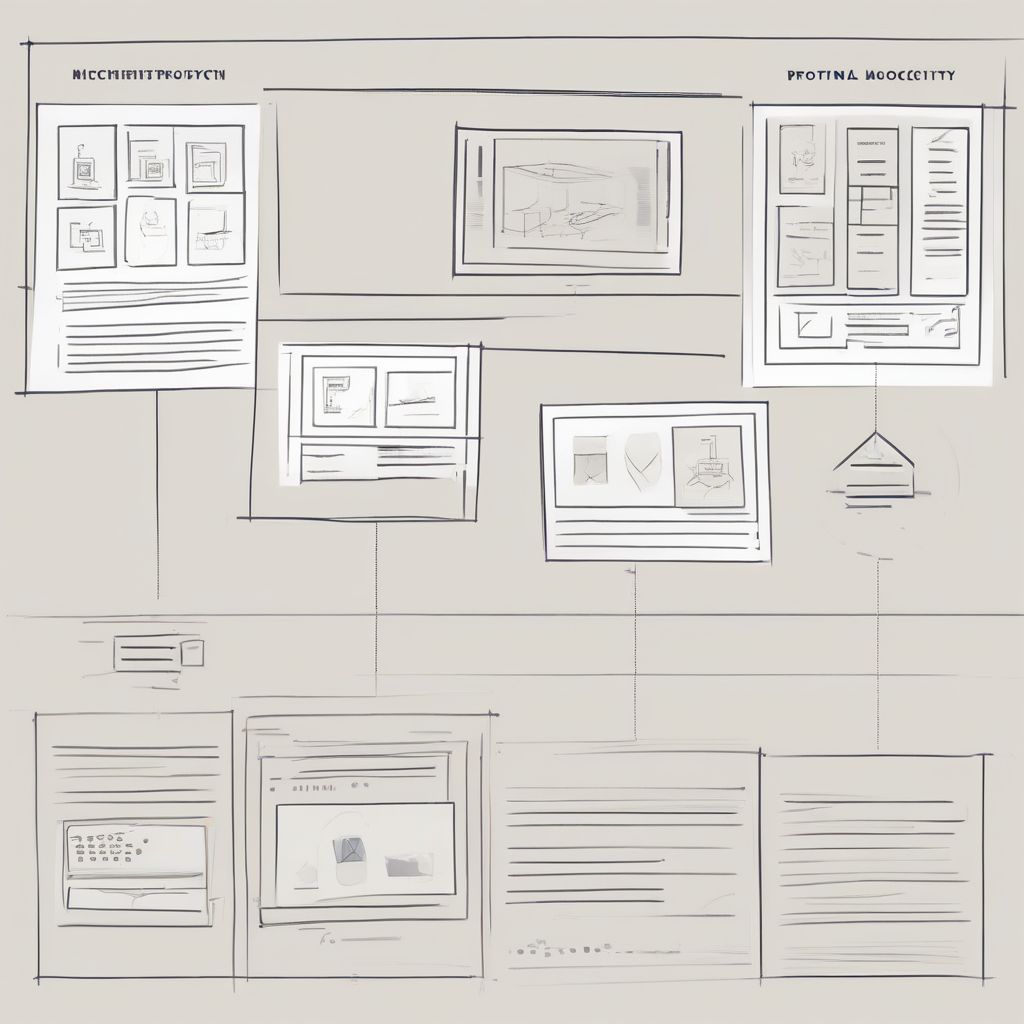Imagine this: You’re about to embark on a cross-country road trip. Would you just hop in the car and drive, hoping for the best? Or would you meticulously plan your route, pack provisions, and maybe even do a test run to iron out any kinks?
Product development is much like this road trip. Prototyping is that essential planning stage, the test drive that can save you time, money, and a whole lot of headaches down the road.
Understanding Prototyping: More Than Just a Mockup
Prototyping, in essence, is about creating a tangible representation of your product or service idea. But it’s much more than just a pretty facade. It’s about bringing your vision to life in a way that allows for experimentation and refinement.
There are various levels of prototyping, each serving a specific purpose:
- Low-fidelity Prototypes: Think sketches, wireframes, or even role-playing. These basic representations are great for brainstorming, user testing, and identifying major usability issues early on.
- Mid-fidelity Prototypes: These take things a step further with more realistic visuals and interactions, often using tools like Figma or InVision. They allow for more detailed feedback on user flows and design elements.
- High-fidelity Prototypes: These are as close to the real deal as you can get without actually building the final product. They use real code, simulate complex interactions, and are invaluable for final testing and stakeholder buy-in.
 Prototyping Stages
Prototyping Stages
The Ripple Effect: How Prototyping Impacts Product Development
The benefits of prototyping are far-reaching, impacting nearly every aspect of the product development lifecycle:
1. Mitigating Risk: Fail Fast, Learn Faster
Prototyping encourages early and frequent failure, but in a controlled environment. By identifying and addressing flaws in the initial stages, you significantly reduce the risk of costly redesigns and rework down the line. This iterative process of “fail fast, learn faster” is key to agile development and ultimately leads to a more robust final product.
2. Fostering Communication and Collaboration
A prototype acts as a shared language between designers, developers, stakeholders, and even potential users. It provides a concrete point of reference for discussions, feedback, and decision-making, fostering a collaborative environment where everyone is on the same page.
3. Testing Assumptions and Validating Ideas
Prototyping allows you to put your assumptions to the test. Instead of relying on gut feelings, you gather real user feedback early on, validating your product’s core value proposition and ensuring you’re building something people actually want.
4. Optimizing User Experience (UX)
Prototyping is crucial for creating user-centric products. By testing different design iterations and user flows, you can identify and eliminate usability issues, leading to a more intuitive and enjoyable experience for your target audience.
5. Saving Time and Money
While prototyping may seem like an added expense, it’s an investment that pays off exponentially in the long run. By catching errors and design flaws early on, you avoid costly rework and ensure a smoother, more efficient development process.
Real-World Examples: Prototyping in Action
Countless successful products owe their success, in part, to effective prototyping. Here are a few notable examples:
- Dropbox: Before building their file-sharing service, Dropbox created a simple explainer video showcasing the product’s functionality. This low-fidelity prototype helped them gauge user interest and secure early funding.
- Airbnb: Faced with slow growth, Airbnb used prototyping to test various aspects of their platform, including their booking process and user interface. This iterative approach led to significant improvements in user experience and a surge in bookings.
Prototyping: Your Secret Weapon for Product Development Success
In today’s fast-paced market, prototyping is no longer optional; it’s a necessity. By embracing a culture of prototyping, you empower your team to innovate, iterate, and ultimately deliver exceptional products that resonate with your target audience.
Conclusion: Embrace the Power of Prototyping
Just as a seasoned chef tastes and adjusts their recipe throughout the cooking process, successful product development hinges on continuous iteration and refinement. Prototyping provides the framework for this iterative approach, ensuring your product is not only functional but also delightful and user-friendly.
As you embark on your next product development journey, remember that prototyping is not just a step in the process; it’s a mindset. By embracing experimentation, feedback, and continuous improvement, you set the stage for creating truly remarkable products that leave a lasting impact.
What are your thoughts on the role of prototyping? Share your experiences and insights in the comments below!
[amazon bestseller=”product design prototyping”]
